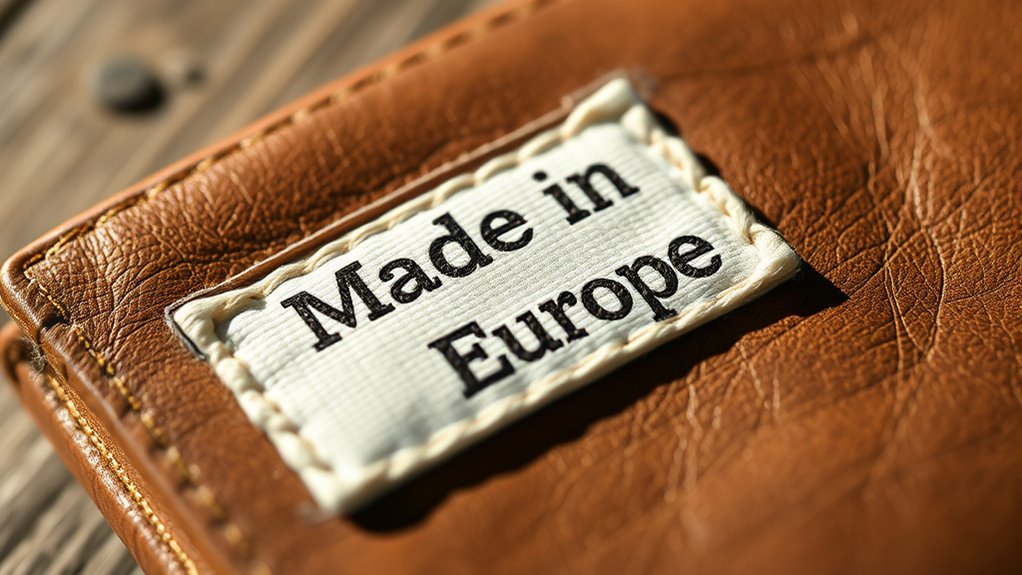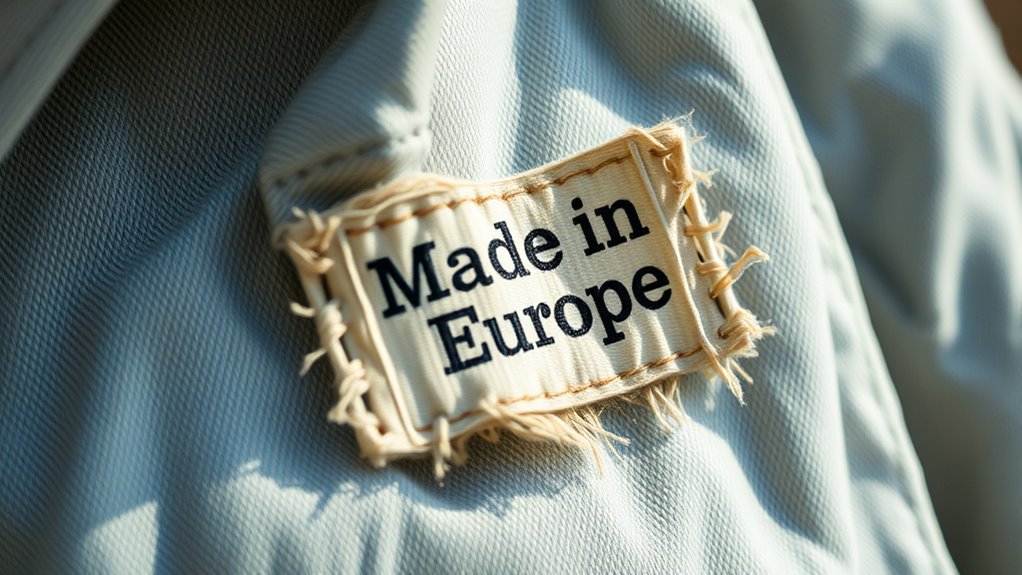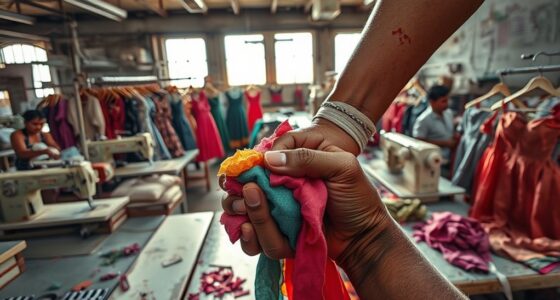The “Made in Europe” label often suggests high quality and authentic craftsmanship, but the reality is more complex. Many products feature components sourced outside Europe, and assembly may happen elsewhere. This means the full supply chain isn’t always transparent, making it hard to verify true origins. While the label influences trust and perception, understanding the full story behind this branding can reveal surprising supply chain details you might not expect. Keep exploring to uncover more about its true background.
Key Takeaways
- “Made in Europe” often signifies final assembly, not complete supply chain transparency or component origins.
- Many products incorporate imported parts, making full European manufacturing claims misleading.
- Brands emphasize European assembly to boost trust, though supply chain details may remain undisclosed.
- Transparency in sourcing and labor conditions is limited, raising questions about authenticity and ethics.
- Consumer trust depends on clear supply chain information, which is frequently obscured despite “Made in Europe” labeling.

Have you ever wondered what “Made in Europe” truly signifies? It’s more than just a label; it’s a symbol that influences how consumers perceive a product’s quality, craftsmanship, and authenticity. But behind that label lies a complex web of supply chain transparency and regional manufacturing standards. When you see “Made in Europe,” you might assume the product was entirely crafted within European borders, with clear oversight and ethical practices. However, the reality is often more nuanced. Many products bearing this label involve components sourced from multiple countries, assembled elsewhere, or pass through various stages before reaching you. This lack of supply chain transparency can sometimes lead to misconceptions, making it appear as if the product is wholly European, when in fact, parts of it may have originated outside the continent.
Your perceptions are shaped by the reputation associated with European manufacturing—renowned for quality, durability, and environmental standards. That reputation can influence your purchasing decisions, encouraging you to choose products labeled “Made in Europe” over others, even if the actual supply chain details are less clear. Many brands leverage this perception to boost their appeal, often emphasizing the European origin to reassure consumers about safety, craftsmanship, and ethical practices. Yet, the transparency of the supply chain isn’t always as straightforward as it seems. Some companies might only highlight the final assembly in Europe, while components are produced elsewhere under different working conditions and regulations. This can sometimes create a disconnect between consumer perceptions and reality, leading to questions about authenticity and ethical sourcing.
Understanding what “Made in Europe” entails can help you make more informed choices. It’s essential to regard not just the label itself but also the transparency of the supply chain behind it. Brands that prioritize supply chain transparency openly share information about where their materials come from and how their products are made. This transparency can profoundly influence your trust and confidence in the product, aligning your values with your shopping habits. Conversely, a lack of clear information may prompt you to question the integrity behind the label. Ultimately, the “Made in Europe” tag is a powerful marketing tool that relies heavily on consumer perceptions—perceptions that can be shaped by both the reputation of European manufacturing and the actual transparency of the supply chain involved. Being aware of these dynamics empowers you to make choices that reflect your values and expectations for quality and ethics.
Frequently Asked Questions
How Do Companies Verify European Origin Claims?
You might wonder how companies verify European origin claims. They typically perform origin verification by tracing their supply chain transparency, ensuring each component or material originates within Europe. This process involves detailed documentation, supplier audits, and certifications to confirm compliance with regional standards. By actively monitoring these aspects, companies can confidently authenticate the origin of their products, safeguarding their reputation and meeting legal requirements.
Are There Legal Penalties for False “Made in Europe” Labels?
You should know that false “made in europe” labels can lead to serious legal penalties, as authorities prioritize labeling authenticity and consumer protection. If companies falsely claim European origin, they risk fines, product recalls, or legal action. These measures ensure consumers receive accurate information, maintaining trust and fairness in the marketplace. So, always verify the authenticity of such labels, because mislabeling can have significant legal consequences for businesses.
Which Countries Are Considered Part of Europe for Labeling?
When you see “Made in Europe” labels, it includes countries within the European Union and border countries that have trade agreements. You’re looking at nations like France, Germany, Italy, Spain, and nearby countries such as Switzerland and Norway. These countries are considered part of Europe for labeling purposes, ensuring products meet regional standards and regulations. Always check specific country rules if you want to be precise about where a product originates.
How Does the EU Regulate Product Labeling Standards?
Did you know that over 75% of consumers trust European-made labels more? The EU tightly regulates product labeling standards to boost consumer trust and support branding strategies. You’ll find clear rules on origin, ensuring labels accurately reflect where products are made. These regulations help protect consumers from misleading claims and strengthen European brands’ reputation, making it easier for you to make informed, confident purchasing decisions.
Can Products Be Assembled in Europe but Made Elsewhere?
Yes, products can be assembled in Europe but made elsewhere, which affects supply chain transparency and consumer awareness. When a product is assembled in Europe, it might still contain significant components sourced from outside the region. This makes it important for you to stay informed about where each part originates, ensuring you understand the true origins of what you’re buying. Being aware of assembly versus manufacturing helps you make more conscious purchasing decisions.
Conclusion
Now that you know the story behind those “Made in Europe” labels, you see them in a new light. They’re more than just tags—they’re whispers of tradition, craftsmanship, and history woven into every product. Next time you see one, imagine the journey it represents, like a tapestry of passion and perseverance. Let these labels remind you that behind every item is a story worth telling, a legacy waiting to be uncovered.








